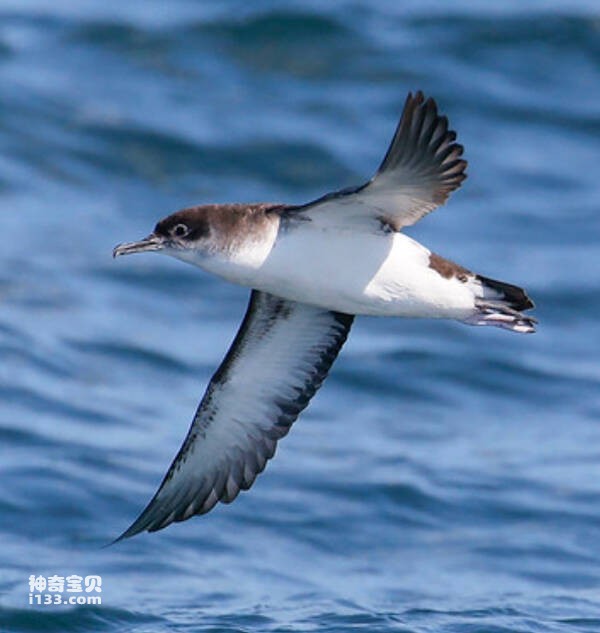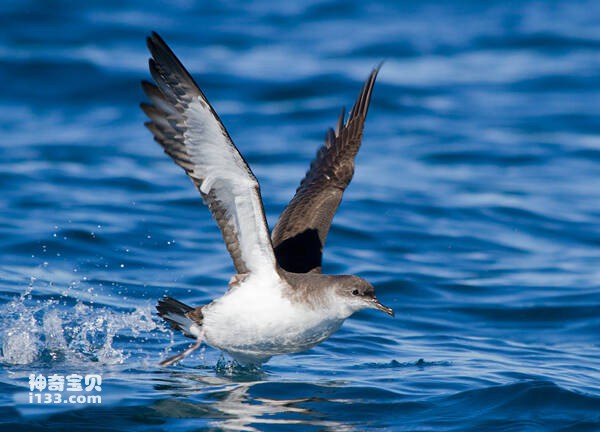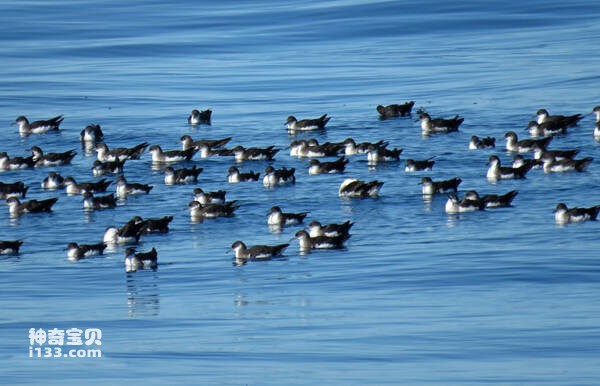Puffinus puffinus
IUCN
LCBasic Information
Scientific classification
- name:Puffinus puffinus
- Scientific Name:Puffinus puffinus,Manx Shearwater,Puffin des Anglais
- Outline:Waterfowl
- Family:
Vital signs
- length:About 38 cm
- Weight:350-450g
- lifetime:No textual research information is available
Feature
The upper body is uniformly black, but may appear brown in strong light, and the lower body white.
Distribution and Habitat
The Atlantic puffin breeds in the North Atlantic, and there are major breeding sites along the Atlantic coast of the United Kingdom and Ireland. Breeding sites also exist in Iceland, Massachusetts (USA), and Newfoundland Island (Canada), as well as the Azores, the Canary Islands of Portugal and Spain. The Atlantic puffin undergoes an equatorial migration and expands its range in winter to include the Atlantic coast of South America below the equator and the southwest coast of South Africa.
During the breeding season of the Atlantic puffin, nearly 90% of the population nests on islands, isolated headlands along the coasts of the United Kingdom and Ireland, and rocky peaks of certain mountains. During the rest of the time, they are a pelagic species and live offshore. When most birds return to the coastlines of the Bay of Biscay or the English Channel in spring, they will return to their nesting sites.
Appearance
The Atlantic petrel is 38 centimeters in length, with a wingspan of 76 - 89 centimeters and a weight of 350 - 450 grams. It is a typical medium-sized petrel, with the upper body uniformly black, but it may appear brown under strong light. Unlike other petrels of the same genus, the black crest is significantly lower than the eyes. The lower body is white, and at times there are some dark markings on the armpits and the underside of the wings. The black, slender beak has a small tube at the top. The webbed feet are located far behind the body, making them excellent swimmers. However, when this species is on solid ground, it walks clumsily, largely restricting its movement skills.
Details
The Atlantic Shearwater (Puffinus puffinus) has two subspecies: Manx Shearwater and Puffin des Anglais.

This Marine species is primarily found in continental shelf waters and is often found in vast stretches of the ocean, from the cold subarctic waters around Iceland to the tropical waters of South America. They are also found in the North and South Pacific. The species has a strong sense of direction, and despite these large movements, they can return to their nesting sites without error. For such long journeys, the Atlantic shearwaters can fly almost without fatigue on their long, narrow wings, because they take advantage of the air currents generated by the movement of the waves. These birds swim freely on the water and haunt the waves. Flight consists of rapid wingbeats and long glides. Atlantic shearwaters can often be seen gathering in "rafts" near their breeding grounds, waiting for darkness to return to the dry land. This strategy is designed to avoid predation by black-backed gulls. However, this strategy has often proved unsuccessful in areas where the two species live together.
Atlantic shearwater adults catch their prey mostly on the surface, skimming the water and sometimes touching the surface with their feet. Sometimes the Atlantic shearwater dives from the air into the water and can swim underwater in pursuit of fish. Since many fish stocks are migratory, when local resources are depleted, Atlantic shearwaters accompany their prey on long journeys to new favorable areas. To feed their young, adult birds can fly hundreds of kilometers a day between breeding grounds and fishing grounds.

Atlantic shearwaters feed on small fish, such as herring, herring, and anchovies, as well as cuttlefish and small crustaceans.
The breeding season for Atlantic shearwaters begins in March, forming colonies on coastal or offshore islands, nesting in selected burrows. The female lays a single white egg, averaging 61 mm x 42 mm and weighing 57 grams, of which 7% is the shell. After laying eggs, they leave the nest to forage, while the male begins to hatch. The sexes take turns incubating the eggs every 6 days until the chicks hatch, 47-55 days after the start of laying. When the chicks are a few days old, they are left alone in their burrows by their parents during the day. To be on the safe side, the adult birds return to the nest at night and feed the chicks by regurgitating semi-digested fish. After 2 months, the chicks were well fed and larger than the adults. When the subcutaneous fat reserves have reached a certain level, the young bird is finally ready to go to sea. Three weeks later, they could have reached the South Atlantic. From the age of two, gulls return to their native land. However, they do not start nesting and breeding until they are five or six years old.

In Europe (with coverage over 95% of the breeding range), the breeding population is estimated at 342,000-393,000 breeding pairs, This equates to 684,000-785,000 mature individuals or 1,026,000-1,177,500 individuals (BirdLife International 2015). Brooke estimated in 2004 that the global population of Atlantic shearwaters was at least 1,000,000.
Listed on the IUCN Red List of Threatened Species (IUCN)2018 ver3.1 - Not Threatened (LC).
Protect wild animals and eliminate wild meat.
Maintaining ecological balance is everyone's responsibility!








